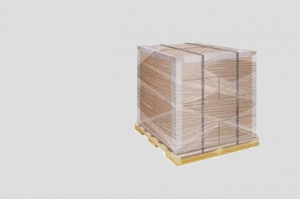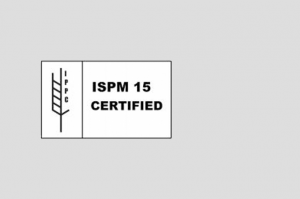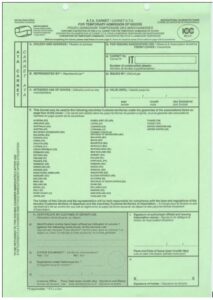Shipping by air (via airplane) is the fastest and most efficient way to transport goods domestically & internationally. The trade-off that comes with choosing air freight over ocean freight shipping is that costs are usually much higher. With that said, our Exfresso system can help you find the most effective air freight transportation for your goods at the best rates. We make it a priority to provide you with all the information needed to complete the shipping process flawlessly from start to finish. We’ll assist with the preparation of legal documents and we’ll also ensure speedy delivery of your goods. With service to over 150 countries worldwide, we provide global coverage and faster delivery times than other modes of transport. Airfreight is Ideal for shipments over 150 pounds and up. For shipments weighing less than 150 lbs check our courier rates. Our Airfreight service offers a maximum dimension per piece of 317 cm long x 241 cm wide x 297 cm tall || 125 in. long x 95 in. wide x 117 in. tall for both Door to Door and Door to Airport service.
ExFreight offers 4 service levels of airfreight wherever possible, Deferred, Standard, Express and Express Direct. Each service level has a different cost structure and priority.
Deferred cargo is the cheapest and is most likely of any to be bumped for higher-paying cargo if the airline has overbooked the flight.
Standard cargo is the most commonly used service and is very likely to ride as booked.
Express Cargo is a premium and is extremely likely to ride as booked (this should be used for anything that is time-sensitive).
Express Direct service is as its name implies, is on a direct flight. Other services may be routed via hubs which increases the chances of being bumped in extreme conditions. Direct service is generally more expensive and faster than the other service levels.
Max dimensions per piece vary by destination. All destinations can accept 317 cm long x 241 cm wide x 160 cm tall || 125 in. long x 95 in. wide x 63 in tall per piece. Other major destinations can accept up to 317 cm long x 241 cm wide x 297 cm tall || 125 in. long x 95 in. wide x 117 in tall. If we cannot accept the cargo our rating system will not return the rate. On lanes where we can accept pieces taller than 160cm || 63 in. the rate per KG/LB will be higher compared to if the pieces were below that height. Therefore its best to always pack your cargo to be below 160cm || 63 in in height per piece.
If the carriage involves an ultimate destination or stop in a country other than the country of departure, the Warsaw Convention or the Montreal Convention may be applicable and in most cases limit the liability of the Carrier in respect of loss of, damage or delay to cargo. Depending on the applicable regime, and unless a higher value is declared, liability of the Carrier may be limited to 22 Special Drawing Rights per kilogram or 250 French gold francs per kilogram, converted into national currency under applicable law. Carrier will treat 250 French gold francs to be the conversion equivalent of 22 Special Drawing Rights unless a greater amount is specified in the Carrier’s conditions of carriage. Link to get current conversion of Special Drawing Rights to USD presently 31.50 USD per KG Current SDR to USD dollar amount
The weight to be taken into account in determining Carrier’s limit of liability shall be only the weight of the package or packages concerned. Receipt by the person entitled to delivery of the cargo without complaint shall be prima facie evidence that the cargo has been delivered in good condition and in accordance with the contract of carriage. In the case of loss of, damage or delay to cargo a written complaint must be made to Carrier by the person entitled to delivery. Such a complaint must be made: in the case of damage to the cargo, immediately after discovery of the damage and at the latest within 14 days from the date of receipt of the cargo; In the case of non-delivery of the cargo, within 120 days from the date of issue of the air waybill, or if an air waybill has not been issued, within 120 days from the date of receipt of the cargo for transportation by the Carrier. Such a complaint may be made to the Carrier whose air waybill was used, or to the first Carrier or to the last Carrier or to the Carrier, which performed the carriage during which the loss, damage or delay took place. Unless a written complaint is made within the time limits specified no action may be brought against Carrier. Any rights to damages against Carrier shall be extinguished unless an action is brought within two years from the date of arrival at the destination, or from the date on which the aircraft ought to have arrived, or from the date on which the carriage stopped
DOOR TO PORT Includes: pick-up from shipper, basic customs export declaration, Ocean or Air freight to PORT only. Door to Port Does not include: destination terminal fees, customs entry, delivery, import duties and taxes, storage charges, exam fees or any other destination services.
DOOR TO DOOR Includes: pick-up from the shipper, basic customs export declaration, Ocean or Air freight, destination terminal fees, basic customs entry fee, delivery to consignee address with a loading dock (within regular shipping and receiving hours)
Door to door Does not include: destination duties and taxes, special import permit (if applicable), exam fees, storage charges (if incurred), any other destination services.
Airfreight and small parcel services are very similar in their speed and efficiencies. The biggest difference between the two services is the first and final mile trucks we use to pick up and deliver the freight. For air freight we use larger dock level trucks that are capable of carrying large and heavy pieces of cargo. The trucks require loading docks and move freight between terminals using pallet movers therefore your items must be palletized and shrink wrapped or crated when shipped. For small parcel we use smaller vans to pick up and deliver shipments. These vans are NOT dock level and the freight moves through terminals that have conveyor belt sorting systems. This allows you to ship your boxes loose and unpalletized with small parcel. The maximum dimensions and weight per piece for small parcel service is less than the established maximums for air freight. The Exfresso system will automatically show you the small parcel service if your shipment falls within the maximum thresholds.
Air freight
- Larger maximum dimensions per piece
- Cheaper for larger shipments but has a higher minimum freight charge
- Higher maximum limited liability per kg
- Must be palletized and banded
- Customs clearance fees, duties, and taxes are separate service items with associated costs
Small parcel
- Transit times are faster
- A specialized pickup and delivery network is used to allow smaller shipments and lower costs
- Small maximum dimensions per piece
- Maximum length is 120 cm, max girth is 243 cm, and maximum weight is 67 kgs per piece
- Cheaper for small shipments but expensive on heavier shipments
- Low maximum limited liability per kg. Be sure to consider purchasing insurance.
- Does not need to be palletized
- Can ship in loose cartons
- Lower dimensional weight factor resulting in higher costs for light packages
- Small parcel customs clearance fees are included up to the de minimis value
- Additional customs clearance, duties, and taxes are applicable when cargo value exceeds the allowed de minimus value
Dimensional weight which is some times referred to as DIM weight, is a density derived weight used by shipping and freight companies to compensate carriers on lightweight bulky packages. Dimensional weight is primarily used in air freight and small parcel services. Dimensional weight works by calculating the cubic volume of a shipment and then applying the carrier’s weight per volume metric. For example, the typical air freight dimensional weight is 10.4 lbs per cubic foot.
Actual weight is the actual weight of the cargo when shipped including the packaging and pallet its shipped on.
Chargeable weight is the greater of the shipment’s dimensional weight compared to the actual weight. Our air freight service will be billed on the chargeable weight. The Exfresso rating system will automatically calculate the dimensional weight, therefore there is no need to calculate it when requesting a rate online.
You should consider the effects of dimensional weight when shipping by air when packaging and palletizing your shipment. If your item is light any excess space can cost you additional money so its try not to waste any space.
Pack all your merchandise in boxes or crates. NO loose/unpackaged freight will be accepted unless its moved on our small parcel service. Refrain from using bags or flimsy boxes. In addition, each box/crate must be properly sealed. Palletizing is required when shipping multiple pieces. If a single piece is over 75 Lbs you must also palletize that piece of cargo. When multiple boxes or crates are shipped loose, your risk for loss increases therefore all pieces should be secured to the pallet using shrink wrap or banding. It is also suggested to use cardboard or another protective layer around the cargo prior to shrink wrapping or banding. Other Freight will be consolidated with yours so ensure your cargo is properly packed and protected. IF you are shipping as LCL ocean freight we highly recommend crating your cargo as your shipment will be loaded and stacked with other cargo and endure a long Journey. All International shipments must use heat-treated wood with an ISPM 15 stamp in order to kill harmful insects. It must be stamped with the appropriate IPPC logo. Any untreated wood will be rejected for international transport. This applies to but is not limited to the following: pallets, crates, wooden boxes and pieces of wood used to support or brace cargo.
All air freight is transported under TSA regulations which stipulate that any shipment weighing over 150 lbs or large enough to house a human, be banded 4 ways. Barrels, constructed of plastic or metal, be metal banded 4 ways. Any pallet built to a height where the load could become unstable in transit, be plastic wrapped and banded 4 ways. All combustible engines must be ”Drained and Flushed” and have a letter on company letterhead attesting that the engine was drained and flushed.
4 way banding required

ISPM stamp for all wood packaging

If you are temporarily exporting or importing your shipment for any reason, whether it be for a trade show or for any other reason its important to consider who will pay the destination duties and taxes before you ship. In some countries, a temporary import can be made and the duties and taxes can be refunded once exported. This can still be a drain on budgets as duties and taxes can be in excess of 20-40% of the value of the commodity you are shipping. Additionally, the refund process with the foreign customs agency can take months. Alternatively, you can also consider setting up a Carnet for your shipment. A Carnet is an international customs and temporary export-import document. It is used to clear customs in 87 countries and territories without paying duties and import taxes on merchandise that will be re-exported within 12 months. You can set up a Carnet and Exfreight can process the export and import clearances with it and defer any duties and taxes. Exfreight does not set up Carnets but we can process your shipment once you have set up a Carnet. There are additional fees to process export and import clearances with Carnets. Please check with operations for the additional fees which range from an additional 100 – 350 dollars per customs entry.

Destination terminal fees are fees payable to the destination terminal to offload your freight from the ocean vessel, aircraft or ocean container. If you book a shipment on a DOOR TO PORT service these fees ARE NOT INCLUDED. The consignee will have to pay for these charges at the destination along with arrange the delivery from the port and customs entry at the destination port. These fees can be quite high for some services, specifically for LCL ocean freight which in some cases has higher destination terminal fees that the actual freight charges to move the freight to the destination terminal. Be wary of anyone quoting a shipment where there are not destination terminal fees included in the quote as you or your buyer at the destination may get a large destination terminal fee surprise.
If you book a shipment with Exfreight on a DOOR to DOOR service these destination terminal fees are included in the rate.










